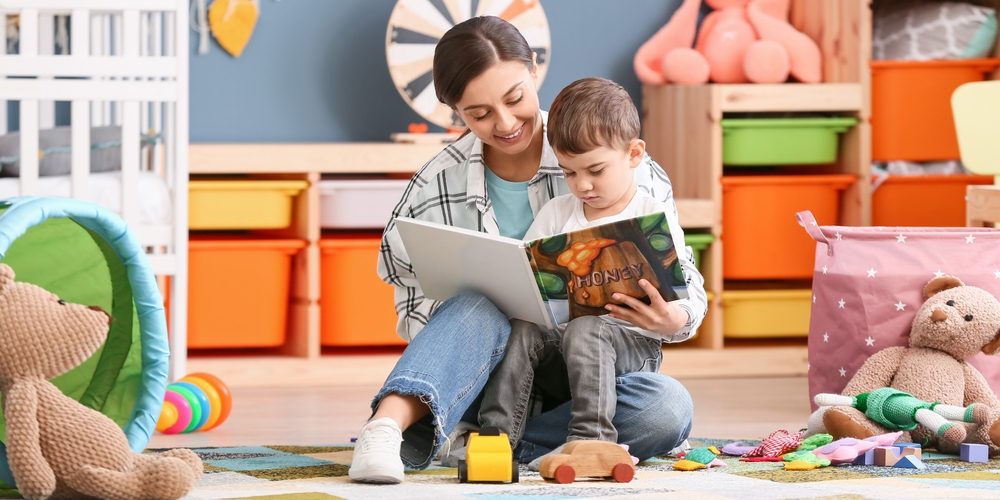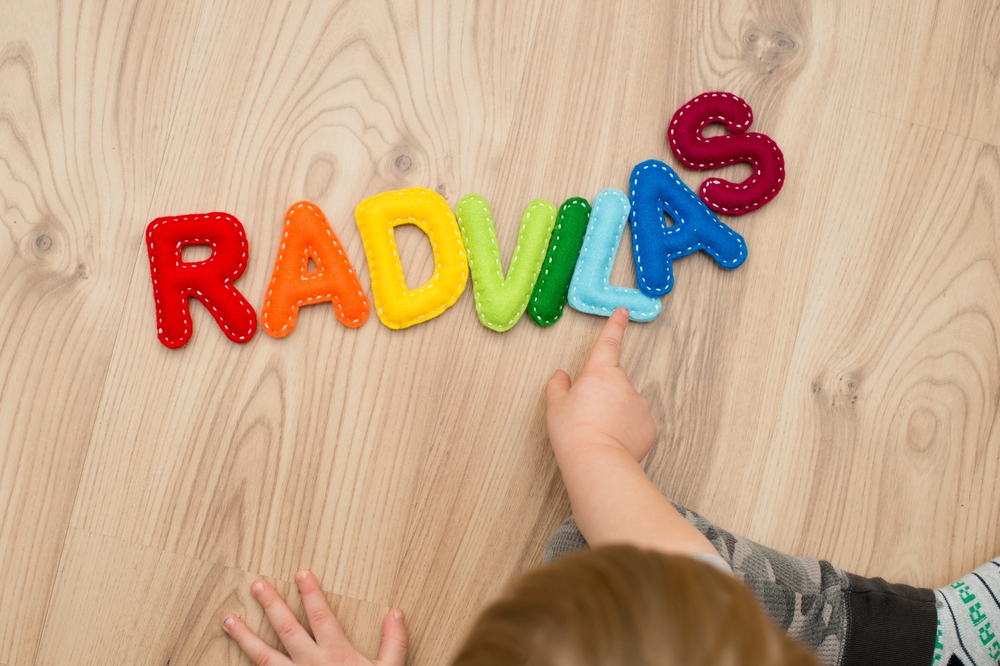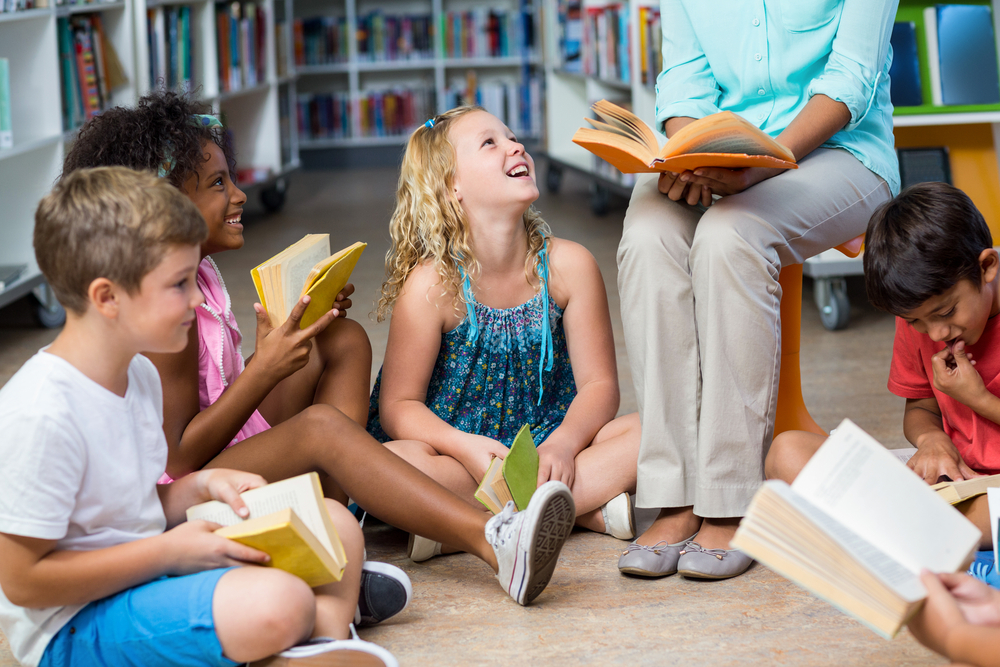
When children begin kindergarten, they will start to learn to read. Some children might already be reading fluently while others might still be learning sounds or letters. While a child might learn to read at their own pace, school districts have benchmarks for what children are expected to master at the age of every grade level—including kindergarten.
Parents who notice that their child is struggling with reading or might need more practice can work with their child at home. Here’s how to help kindergartener with reading at home to improve their fluency and comprehension:
- Practice sight words
- Read together
- Encourage children to read aloud
- Play letter games
- Read wordless books
- Choose appropriate books
- Go to storytime sessions
- Incorporate reading tools
- Use a reading app
Sight Words in Kindergarten
Many school districts require children to memorize a list of sight words. Children will need to practice this list of words until they master them. How can parents help children memorize these words and identify them by sight?
Make the process fun. Some teachers might recommend using flash cards. This is an easy way to skill and drill. Use index cards to make a deck of sight word cards. Shuffle them up and practice with children every night.
Parents also could play a matching game with children to work on learning sight words. Make two cards for each word, shuffle the deck and lay them face down. Then take turns choosing cards and making matches. Have children say each word when they flip a card.
How do sight words help children learn to read? These words are so common in books and stories that knowing them by sight can simplify the reading process; these words don’t need to be decoded since they are memorized.
Read Together Every Day
Even in kindergarten, children might be assigned a specific number of reading minutes as daily homework. Yet, while children need to practice reading, parents can still read to children. Reading together and sharing stories is a great bonding experience.
Parents should talk to children as they read the story. Encourage children to predict what might happen next or discuss how a character might be feeling. At the end of the story, ask children about their favorite parts. If they didn’t like the book, talk about why.
Conversations about stories might encourage children to think more about what they read.
Encourage Children to Read Aloud
When reading together, parents can encourage children to read aloud. Take turns reading a page.
Listening to a child read aloud can help parents understand if they are struggling, and parents can provide additional help. Reading aloud also can help children feel more confident.
If parents use a different voice for each story character, encourage children to make up unique voices, too. Have fun reading aloud and teach children how to read with feeling and confidence.

Play Letter Games to Practice Sounds and Blends
Some children might struggle with their letter identification or have difficulty decoding or blending sounds. There are many apps available on Google Play or the App Store (for free) that can help children practice their letters and master the alphabet. These games also could help children with their sounds, too.
Parents also could make up their own games at home. During summer, go outside and write letters in chalk or draw letters in the sand. Help children practice writing and understanding upper and lower case letters.
For children who need to work on sounds, make a card for every letter of the alphabet and go on an alphabet scavenger hunt. Have children find as many objects as possible for each letter.
Read Wordless Books or Create One
Wordless books are different in that they don’t have a written story. Instead these books only contain pictures. It’s up to the child to tell the story.
These books don’t help with reading in the standard sense, but they can help children understand the parts of a story. They also help foster a child’s independent creativity. A wordless book can be different each time a child reads it.
Children also can make their own wordless books. Use construction paper or just plain printer paper and encourage children to draw pictures that tell a story. Children also should create a cover for their book.
Read the book together and have fun making up new stories each time.
Choose Appropriate Books
Children can struggle to read for many reasons, and some children might struggle because they are trying to read a book that is beyond their level. When helping a kindergartner with reading, make sure the book is at the appropriate reading level.
Typically, teachers send home reading reports that help parents understand their child’s reading progress and their reading level. If parents are unsure about their child’s reading level, they can reach out to their child’s kindergarten teacher.

Go to Storytime Sessions and Listen to Stories
Many public libraries offer a storytime for younger children. These events are great for socialization and they also introduce children to new books and stories. Many children love listening to stories.
In addition, these events can help introduce children to their public library. At the end of the storytime event, take children to look at books. Let them choose a few favorites to check out at the library. This also might be a great opportunity to sign up a child for their first library card.
Incorporate Reading Tools
What are reading tools? These are resources that can help make the reading journey a bit easier for children. Some common reading tools include reading comprehension bookmarks and graphic organizers.
For children who have trouble with reading comprehension, a reading comprehension bookmark can provide a visual reminder as to what they need to think about as they read. Children can make a bookmark, or parents can find free bookmarks online.
A reading comprehension bookmark for a kindergartner might just include simple prompts like “who, what, where, when and how.” These bookmarks also can be used to cover up parts of text to help chunk sections of the story for easier readability.
In addition, kindergartners also could benefit from using a graphic organizer. These are worksheets that have spaces to write in details about a book. Some focus on characters, but others could focus on other literary themes or terms.

Use a Reading App to Help Struggling Readers
A reading app could be beneficial to use at home if a child is struggling to hit grade-level benchmarks. Parents also could use an app to help a kindergartner practice their reading skills or to help them gain confidence reading aloud.
Readability includes a built-in AI tutor that guides reading lessons; the tutor is programmed with voice-recognition software which allows it to understand each child’s voice. Children read stories aloud in Readability, and, if they struggle with a word, the AI tutor will identify the struggle and offer help.
At the end of each book, the tutor also asks questions to test comprehension. If a child answers a question incorrectly, the tutor will show a section of the book that offers details about the answer. The tutor also reads it aloud, and the child has another opportunity to answer the question.
The tutor also measures each child’s reading fluency as they read the program. When a child demonstrates mastery of both reading fluency and reading comprehension, the program advances them to the next level.
Parents can follow their child’s reading progress via a private portal. They can review their child’s reading level, reading fluency (measured in words read per minute), and reading comprehension. The portal also lets parents see how long their child has used the program.
Readability can be used from preschool through fifth grade. Parents can try Readability with their child by signing up for a free seven day trial period. Sign up today to start using the program and begin working with the AI tutor.

 Español
Español